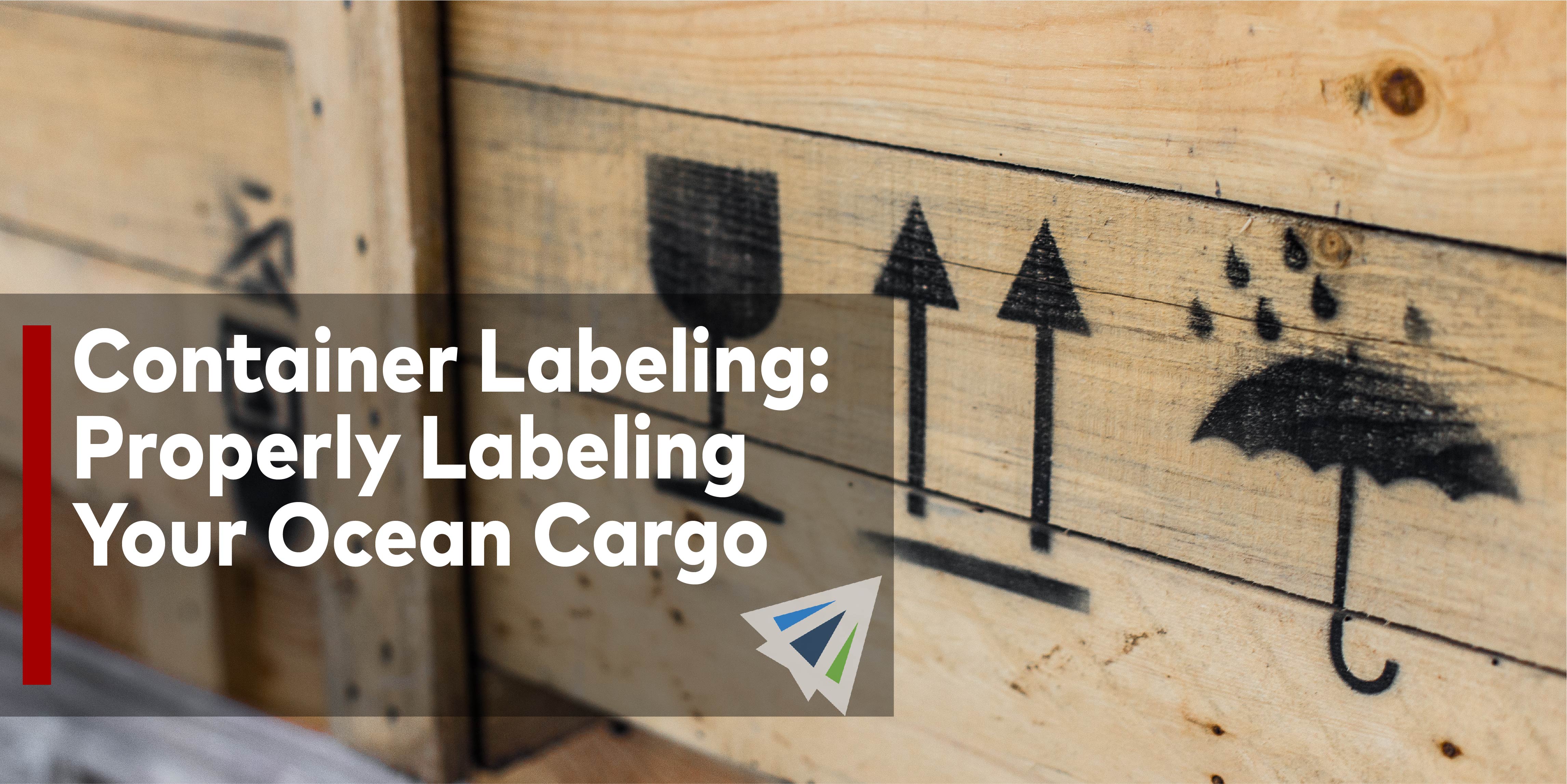Have you researched any of the fines and penalties associated with the U.S. Customs and AMS violations? They are pretty intense, and for good reason. Bottom line is – if you are found in violation of international shipment and cargo labeling regulations, you may be looking at penalties upwards of $10,000 per instance. So does properly labeling your ocean container matter? You bet it does.
Most people don’t know where to start. Labeling cargo for international shipments isn’t as simple as slapping a QR code on your crates. There are various documents associated with each aspect of a shipment, and properly labeling your ocean cargo can be difficult.
Properly Labeling Your Ocean Cargo
Labeling cargo isn’t just a legal procedure – it’s also a step towards risk mitigation for your goods. Not properly labeling cargo may lead to issues with claims or shipment recovery and land you in a sticky situation with both Customs and customers.
Here is a quick rundown on how to properly label your ocean cargo:
1) Label Basic Details on Each Box
If you are shipping LCL, you need to ensure that all necessary information for U.S. Customs, truckers, and your customer is visible on the outside of each box. This mean you must include:
- Shipper’s Name
- Consignee’s Name
- Country of Destination
- Freight Forwarder’s Name
- Booking Number Provided by Your Freight Forwarder
- Port Marks
- Package Numbers
However, the list of details to be placed on the side of the carton will often be provided by the overseas buyer. The list could contain any combination of the following: shipper’s mark, country of origin, weight marking, number of packages, size of cases, handling marks, cautionary marks, labels of hazardous materials, and ingredients. Be prepared to work with your overseas buyer to properly label your container for their receipt.
2) Labeling Fragile Goods
This is kind of a “no-brainer”, but if you fail to label your goods as fragile, you’re asking for trouble. It’s recommended that you label the outside of your boxes as fragile on as many sides as possible. If needed, make sure you mark the appropriate sides with arrows or “this side up” warnings. Essentially, your goal should be to provide any carrier with details as clear as possible regarding how your shipment needs to be handled.
3) Labeling Hazardous Goods
If you are shipping any goods that qualify as a “dangerous good“, they must meed the International Maritime Dangerous Goods (IMDG) requirements. The labeling of such goods is defined using IMDG codes. We won’t dive into the specifics, as it’s a major topic and specific IMDG code lists are available elsewhere, but the gist is that your shipment – under law – is required to be properly labeled.
These IMDG codes are broken down into various “classes”. For example, explosives may be labeled as Class 1, while gasses are labeled as Class 2. Do your research to ensure that you are properly labeling all hazardous goods for the safety of carriers involved, as well as legal compliance and penalty-avoidance!
